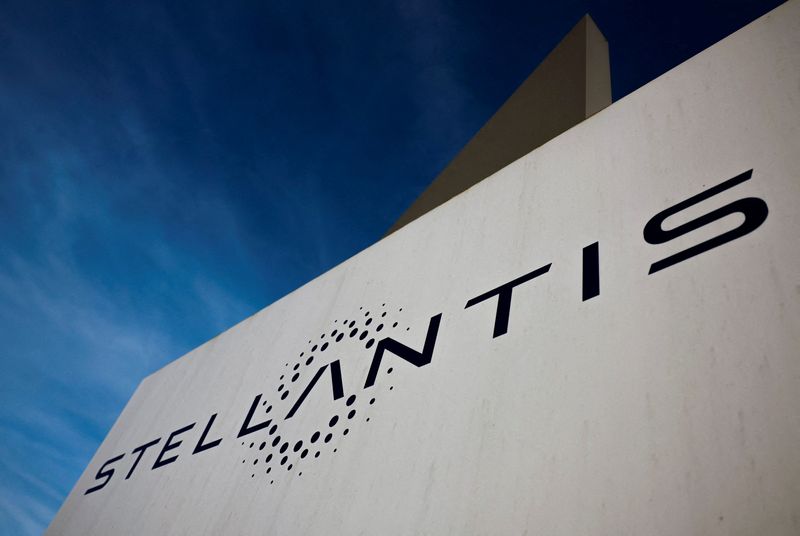
MADRID (Reuters) -Stellantis and Chinese battery maker CATL will invest 4.1 billion euros ($4.33 billion) to build one of Europe’s largest electric vehicle battery factories in Spain, encouraged by lower costs and government funding.
The equal joint venture in Zaragoza in northeastern Spain should start production by the end of 2026 and could reach a capacity of 50 gigawatt hours – enough to power an average of 700,000 cars a day, according to the Netherlands-based Electric Vehicle Database.
The plant will supply lithium iron phosphate battery for affordable small and medium-sized cars, the companies said.
The plan comes as Europe’s carmakers have struggled with high costs and stiff competition from Chinese rivals as well as a slower-than-expected EV transition.
About 2.4 million new electric cars were registered in EU countries in 2023, against 2 million in 2022, data from the European Environment Agency shows.
The plant’s capacity will depend on the evolution of the EV market in the region and support from authorities, said the two companies, who had announced plans for a factory in Europe a year ago.
Europe has been seeking to attract EV battery makers to build factories in the region – home to car makers such as Volkswagen and Stellantis – as it tries to cut a reliance on Asia and win a green subsidies race with the United States.
VOTE ABSTENTION
The decision to award the factory to Spain comes after it abstained on a vote to impose additional EU tariffs on Chinese EV imports. Prime Minister Pedro Sanchez has also urged the EU to reconsider penalising Chinese-made EVs to avoid a trade war.
Carmaking nations such as Italy and France voted in favour of the tariff measures, while Germany voted against.
Chinese companies need Beijing’s approval for direct investments overseas, and China has privately told automakers to halt big investments in European countries that support imposing extra tariffs, Reuters reported in October.
Spain, Europe’s second-largest car producer, in 2020 announced a 5-billion-euro plan to attract EV and battery production using EU pandemic relief funds.
Stellantis has received around 300 million euros from that plan, according to the government.
SPANISH LURE
The subsidies, Spain’s established auto industry, green energy and lower labour costs likely supported CATL’s decision to choose Zaragoza over other European locations, said Christina Rentell, research lead for Iberia and France at Aurora Energy Research.
The country’s abundance of wind and solar power make it an attractive location for battery plants. Indeed, solar energy is 20-25% cheaper in Spain than in central Europe, a McKinsey study showed in July.


